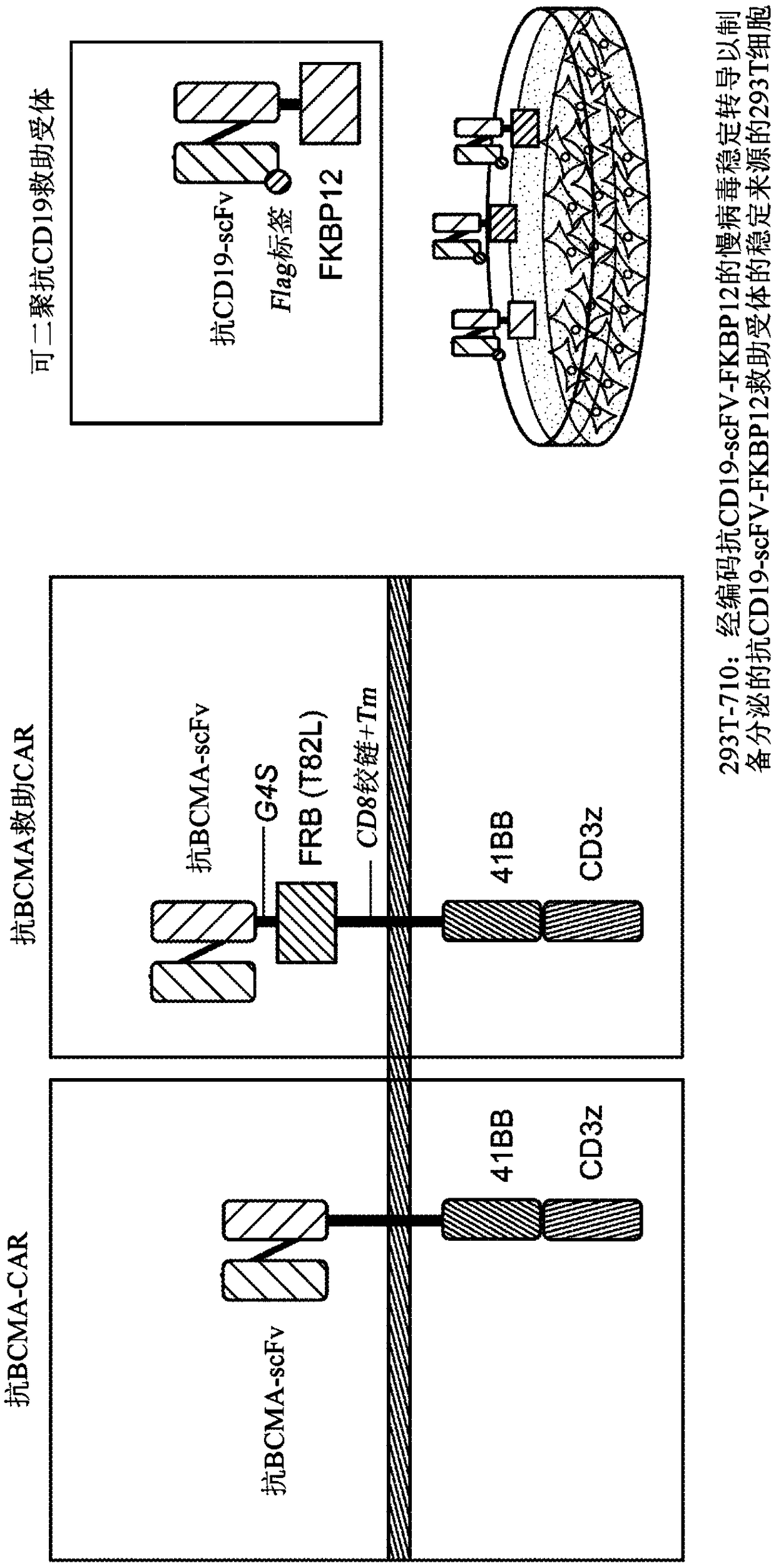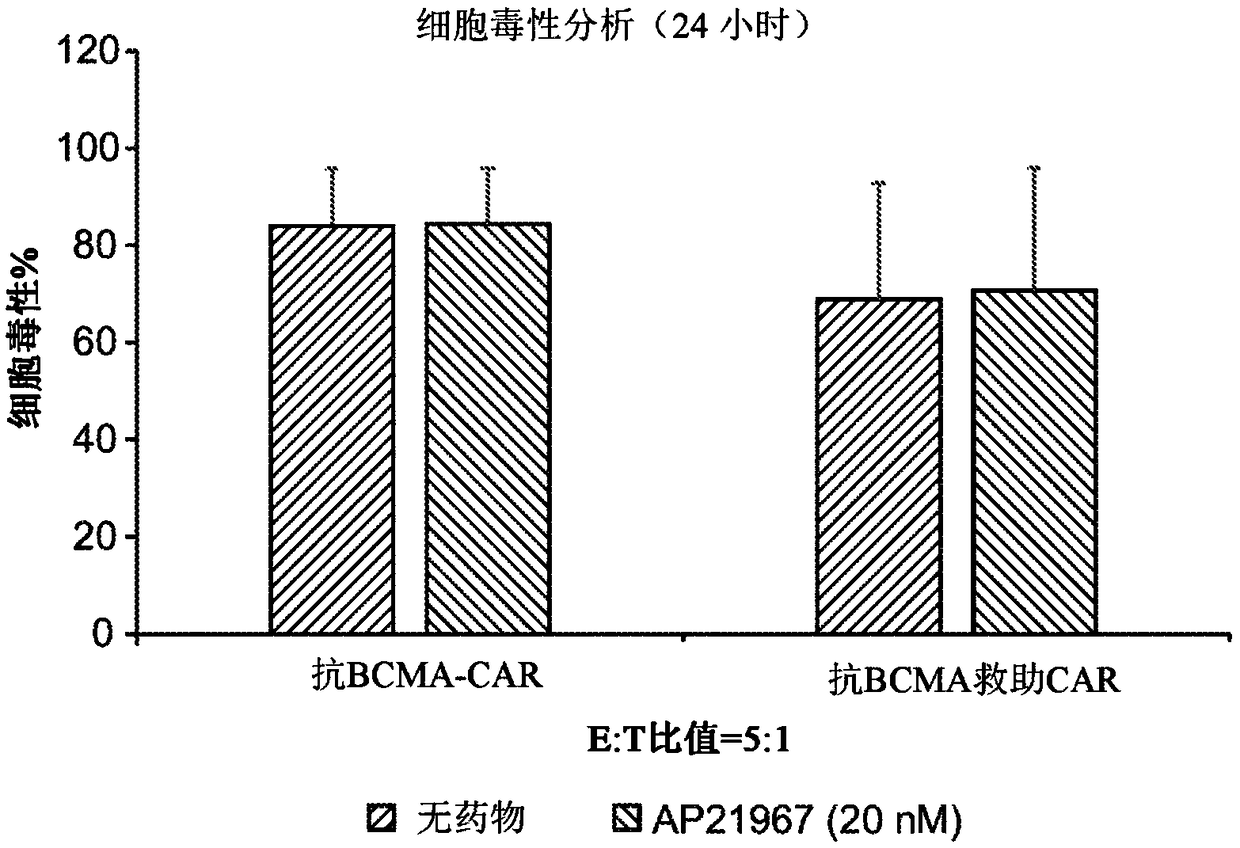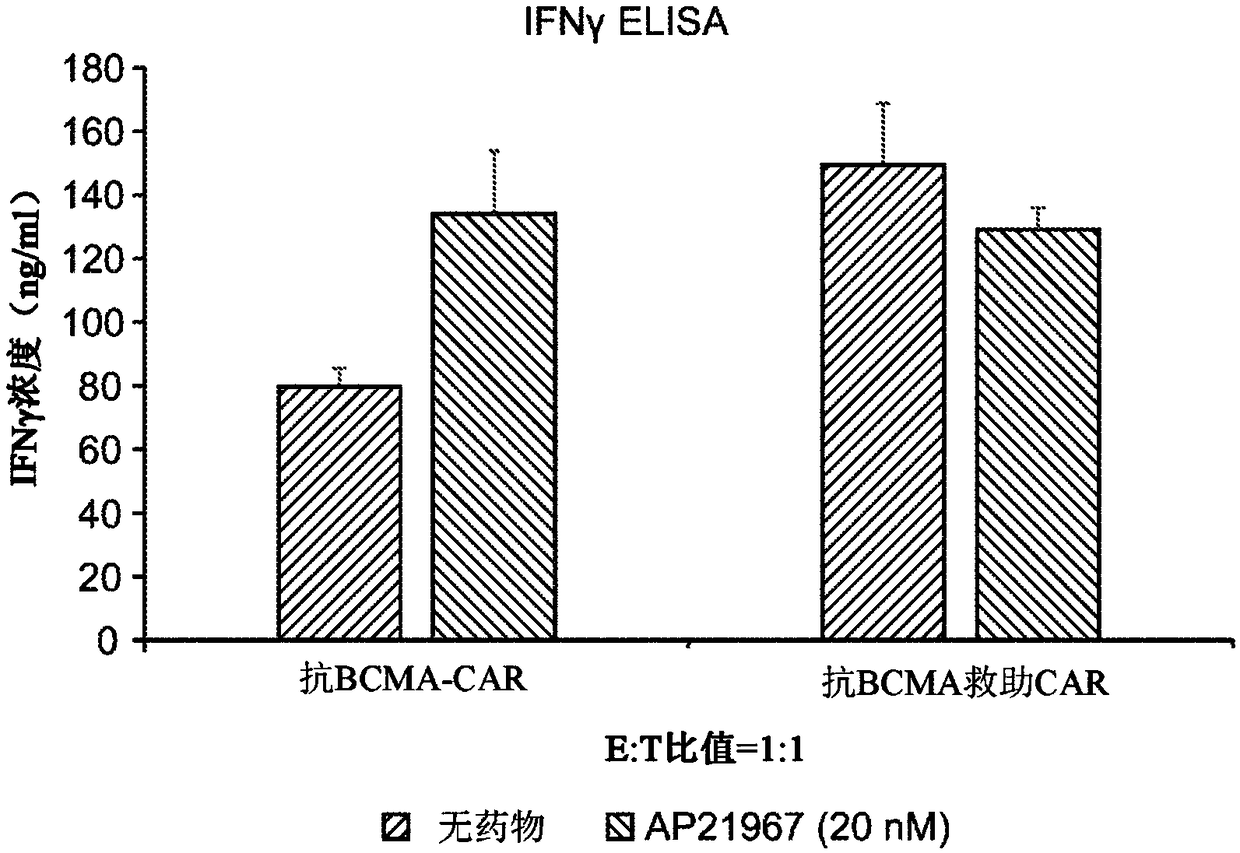Salvage chimeric antigen receptor systems
A technology of chimeric antigen receptors and antigens, applied in improved compositions, cell immunotherapy compositions, and the field of cancer treatment, which can solve limited efficacy, disappointing clinical activity and relapsed or refractory cancers, poor pharmacokinetics characteristic curve etc.
- Summary
- Abstract
- Description
- Claims
- Application Information
AI Technical Summary
Problems solved by technology
Method used
Image
Examples
example 1
[0545] Rescue CAR system
[0546] A functional salvage CAR system uses a dimerizable anti-CD19 salvage receptor and bridging factor AP21967 to redirect anti-BCMA salvage CAR to the CD19-positive, BCMA-negative Nalm-6 cell line.
[0547] The control anti-BCMA CAR contained a CD8α-derived signal peptide, an anti-BCMA scFv, a CD8α-derived hinge region and transmembrane domain, an intracellular 4-1BB co-stimulatory domain, and a CD3ζ signaling domain ( figure 1 , left panel, SEQ ID NO.1). Anti-BCMA rescue CAR contains CD8α-derived signal peptide, anti-BCMA scFv, G4S linker sequence, FRB variant (T82L), CD8α-derived hinge region and transmembrane domain, intracellular 4-1BB co-stimulatory domain, and CD3ζ signaling domain ( figure 1 , central panel, SEQ ID NO.2). The dimerizable salvage receptor comprises an IgK-derived signal peptide, FLAG tag, anti-CD19 scFv and FKBP12 domain (SEQ ID NO: 3). The polypeptide used in this experiment was a polyprotein (SEQ ID NO: 4) also conta...
example 2
[0557] Preloaded Dimerizable Anti-CD19 Salvage Receptor
[0558] A stable 293T cell line (293T-707) expressing a dimerizable anti-CD19 salvage receptor comprising a human lipid delivery was generated using a lentivirus encoding a dimerizable anti-CD19 salvage receptor Protein-2 derived signal peptide, scFv targeting CD19 antigen, FKBP12 domain, T2A.1 sequence, mCherry sequence and woodchuck post-transcriptional regulatory region (WPRE) (SEQ ID NO: 5).
[0559] The dimeric anti-CD19 salvage receptor was purified by collecting and filtering (0.22 μm filter) 500 mL of 293T-707 cell culture supernatant and binding to a FKBP12 specific affinity column. The column was generated by incubating 2 mL of NeutrAvidin Agarose (Thermo Fisher) with 400 μg Biotin-FK506 for 30 min at room temperature under constant rotation. The column was washed with PBS to remove uncoupled biotin-FK506. The filtered 293T-707 supernatant was passed through the column by gravity. Wash the column with PBS un...
example 3
[0562] Preloaded Dimerizable Anti-CD19 Salvage Receptor Redirected Anti-BCMA Salvage CAR
[0563] T cells were transduced with lentiviral vectors encoding anti-BCMA CAR or anti-BCMA salvage CAR. CAR T cells were compared with GFP-expressing CD19-positive Nalm-6 cells and A 50:50 mixture of BFP-expressing CD19-negative K562 cells was co-cultured for 24 hr. Anti-BCMA rescue CAR T cells display CD19-specific cytotoxicity against Nalm-6 in the presence of a dimerizable anti-CD19 rescue receptor preloaded with rapamycin. Figure 5 . AP21967 is not required to trigger CD19-specific cytotoxicity.
[0564] Anti-BCMA salvage CAR T was administered at reduced amounts (125ng, 62.5ng, 31.3ng, 15.6ng, 7.8ng, 3.9ng, 2.0ng) of preloaded dimerizable anti-CD19 salvage receptors at a 2:1 E:T ratio Cells were co-cultured for 24 hr with a 50:50 mixture of GFP-expressing CD19-positive Nalm-6 cells and BFP-expressing CD19-negative K562 cells. As little as 2 ng of preloaded dimeric anti-CD19 sa...
PUM
 Login to View More
Login to View More Abstract
Description
Claims
Application Information
 Login to View More
Login to View More - R&D
- Intellectual Property
- Life Sciences
- Materials
- Tech Scout
- Unparalleled Data Quality
- Higher Quality Content
- 60% Fewer Hallucinations
Browse by: Latest US Patents, China's latest patents, Technical Efficacy Thesaurus, Application Domain, Technology Topic, Popular Technical Reports.
© 2025 PatSnap. All rights reserved.Legal|Privacy policy|Modern Slavery Act Transparency Statement|Sitemap|About US| Contact US: help@patsnap.com



